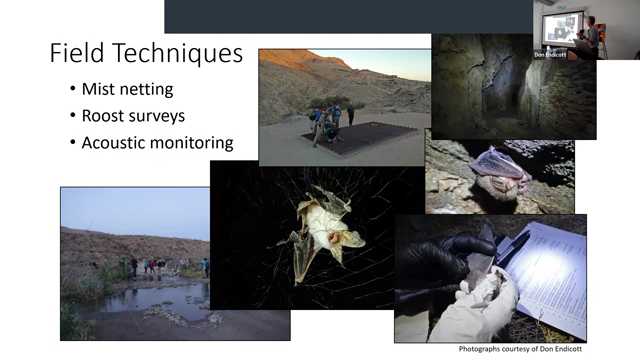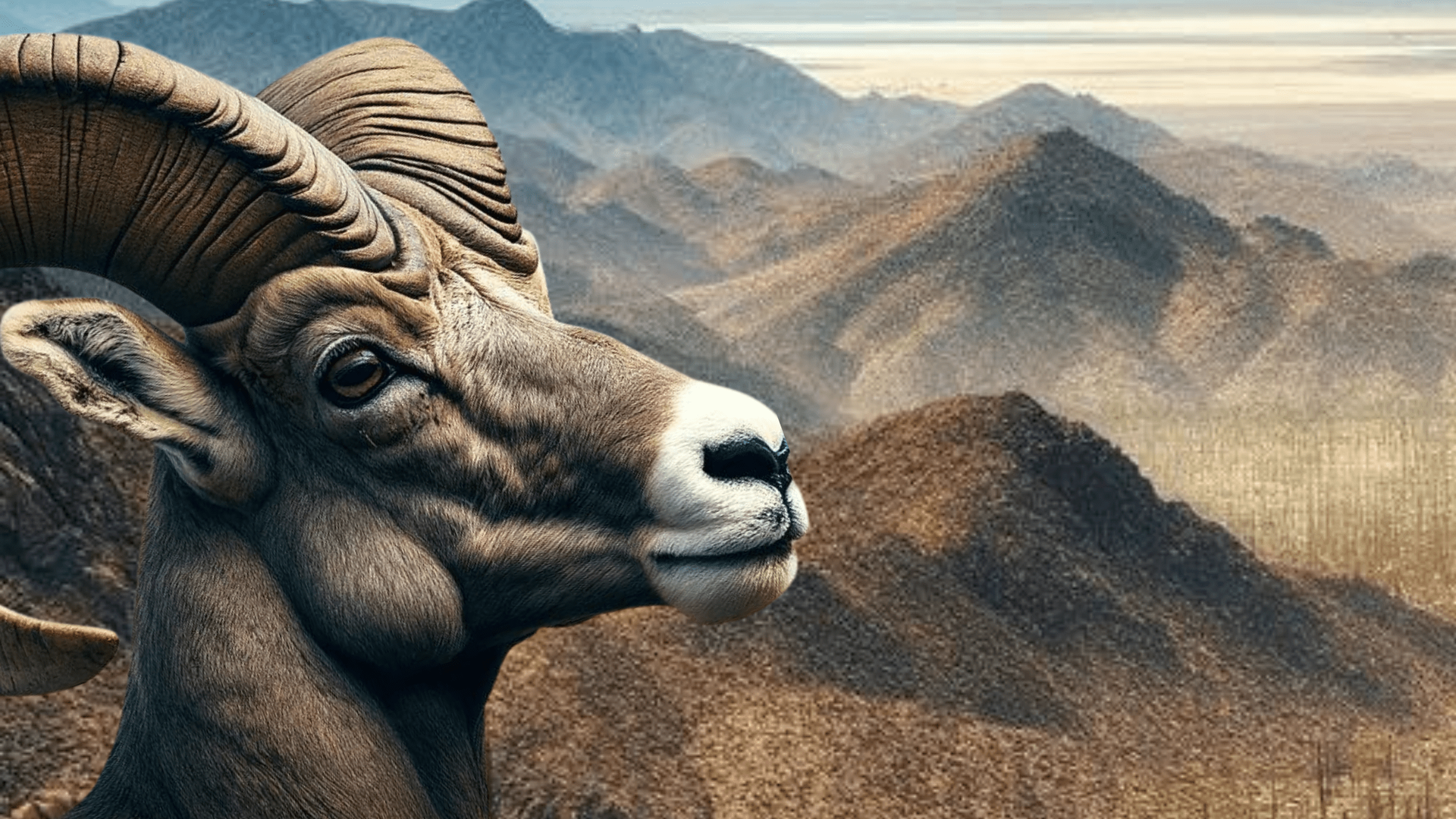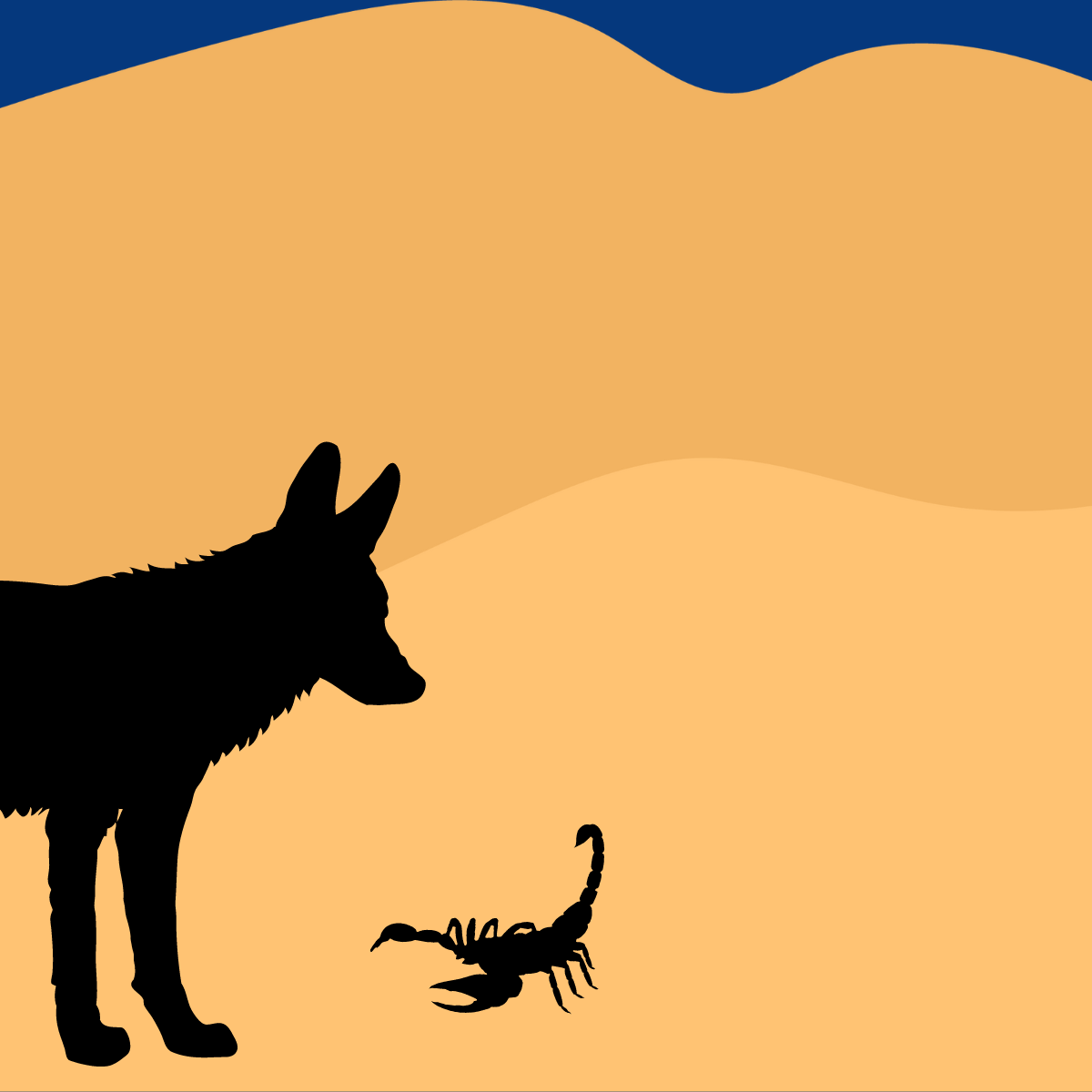Borrego Springs
Animals
From the elusive bighorn sheep navigating rocky terrains to the diverse bird species adorning the clear blue skies, Borrego Springs offers a unique window into the lives of desert dwellers.
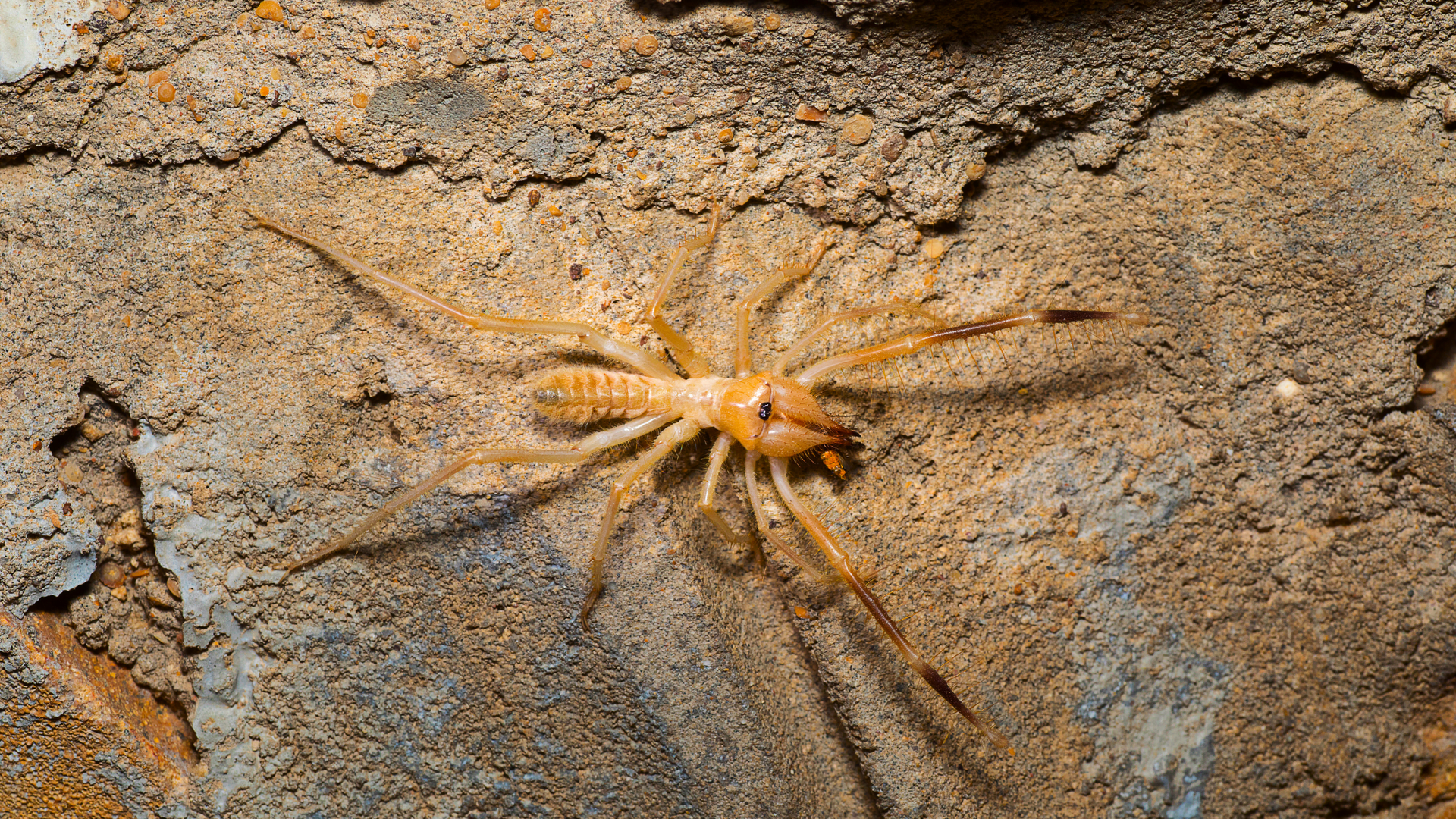
September 22, 2024
Fascinating Facts About the Desert Sun Spider (Solifugae) The desert sun spider, scientifically known as Solifugae, is not a true spider but rather a member of the arachnid family closely related to scorpions and mites. Commonly referred to as windscorpions or camel spiders, these fascinating creatures are native to the arid desert regions of the southwestern United States, including Borrego Springs, California. Appearance and Size Desert sun spiders are known for their distinctive appearance and impressive size, with some reaching up to 5 inches in length. They typically have reddish-brown bodies and long, spiny legs that help them move swiftly through the sandy desert terrain. Their most notable feature is their powerful jaws, which they use to capture and subdue prey. Behavior and Habitat Unlike spiders, desert sun spiders do not spin webs. They are active hunters, using their strong jaws to capture insects, small reptiles, and rodents. They thrive in various desert habitats, including sandy dunes, rocky outcrops, and dry washes. Nocturnal by nature, they are most active at night, when they search for food and mates. Are They Dangerous to Humans? Despite their fearsome appearance, desert sun spiders are not dangerous to humans. They are non-venomous and generally pose no threat. However, like any wild animal, they may bite if provoked. It’s best to admire them from a distance to avoid startling them. Impact on Animals As carnivorous predators, desert sun spiders primarily target small prey like insects and occasionally small mammals. Although they are capable of delivering a painful bite, they do not pose a significant threat to larger animals, including pets. These arachnids tend to focus on small, manageable prey rather than larger targets. How to Spot Desert Sun Spiders For those interested in observing desert sun spiders in their natural habitat, nighttime in the desert offers the best opportunity. Visiting areas like Anza-Borrego Desert State Park in Borrego Springs during the evening or early morning hours increases the likelihood of an encounter. Use a flashlight or headlamp, as the reflection of light in their eyes can help spot them easily. Be sure to respect their space and avoid disturbing them to prevent defensive behavior. A Unique Desert Experience in Borrego Springs Borrego Springs is home to a wide range of fascinating desert creatures, including the desert sun spider. Exploring this region offers opportunities to witness a diverse array of wildlife in their natural desert environment. Whether you're an amateur naturalist or simply curious, Borrego Springs is a great destination to learn more about these unique creatures.

By Borrego Springs Local
•
November 9, 2023
Snake Awareness and Safety in Borrego Springs: Navigating the Desert with Confidence Nestled in the heart of the Colorado Desert, Borrego Springs offers an idyllic escape into nature’s untouched beauty. However, amidst its scenic landscapes, the desert is also home to various wildlife, including a number of snake species. While encounters with these reptiles can be an exciting aspect of the desert experience, it's crucial to approach them with awareness and respect. This blog delves into the essential knowledge and precautions needed for snake awareness and safety in Borrego Springs. Understanding the Local Snake Population The Anza-Borrego Desert, surrounding Borrego Springs, is a vibrant ecosystem teeming with over 50 species of snakes and lizards. Among these, only a few, such as certain rattlesnakes and the sidewinder, are venomous. The sidewinder, in particular, is known for its unique sideways movement and the distinctive horn-like scales above its eyes, adapting seamlessly to its sandy surroundings. Identifying Venomous Snakes Venomous snakes in the Borrego Springs area typically include several rattlesnake species: Western Diamondback : Recognizable by its distinctive diamond-shaped pattern and rattling tail. Mojave Rattlesnake : Known for its potent venom, this species often inhabits the higher, cooler elevations. Sidewinder : This smaller rattlesnake is notable for its horned appearance and unique movement across sand. Familiarizing yourself with these species can enhance your safety and appreciation of the desert’s natural inhabitants. Safety Precautions for Desert Adventurers When exploring the desert landscapes of Borrego Springs, consider the following safety tips to minimize the risk of snake encounters: Stay on Designated Paths : Snakes often hide under rocks and in crevices, so stick to clear paths where visibility is higher. Wear Protective Clothing : High boots and thick pants can provide a barrier against bites, especially in dense underbrush or rocky areas. Use a Walking Stick : A stick can be used to rustle bushes or grass ahead of you, giving snakes a chance to move away. In Case of a Snake Encounter If you come across a snake, it's vital to remain calm and follow these steps: Do Not Disturb : Give the snake plenty of space and avoid sudden movements that could be perceived as a threat. Slowly Back Away : Increase your distance from the snake by slowly moving away without turning your back on it. Do Not Attempt to Capture or Kill the Snake : This significantly increases the risk of a bite. Remember, snakes are protected under local wildlife conservation laws. What to Do in Case of a Snake Bite Despite all precautions, snake bites can still occur. Here’s what to do if you or someone you’re with is bitten: Stay Calm and Immobilize the Affected Area : Keep the bitten limb at heart level to slow the spread of venom. Seek Immediate Medical Attention : Call emergency services right away. Antivenom treatment may be necessary. Do Not Apply a Tourniquet or Ice : These methods can cause further damage and are not recommended. Local Resources and Assistance For assistance with snake removal from your property or in public areas, contact the Borrego Springs Fire Protection District. They offer safe, professional removal services, ensuring the safety of both the residents and the wildlife. Fire Dept: 2324 STIRRUP RD, BORREGO SPRINGS, CA 92004 760-767-5436 Conclusion Borrego Springs is a stunning destination offering unique encounters with nature, including its diverse reptile population. By staying informed and prepared, visitors and residents can safely enjoy all the natural beauty this desert oasis has to offer. Remember, snakes are an integral part of the ecosystem, playing a crucial role in the balance of nature. Respecting these creatures and their habitat allows for a harmonious coexistence and a richer desert experience.
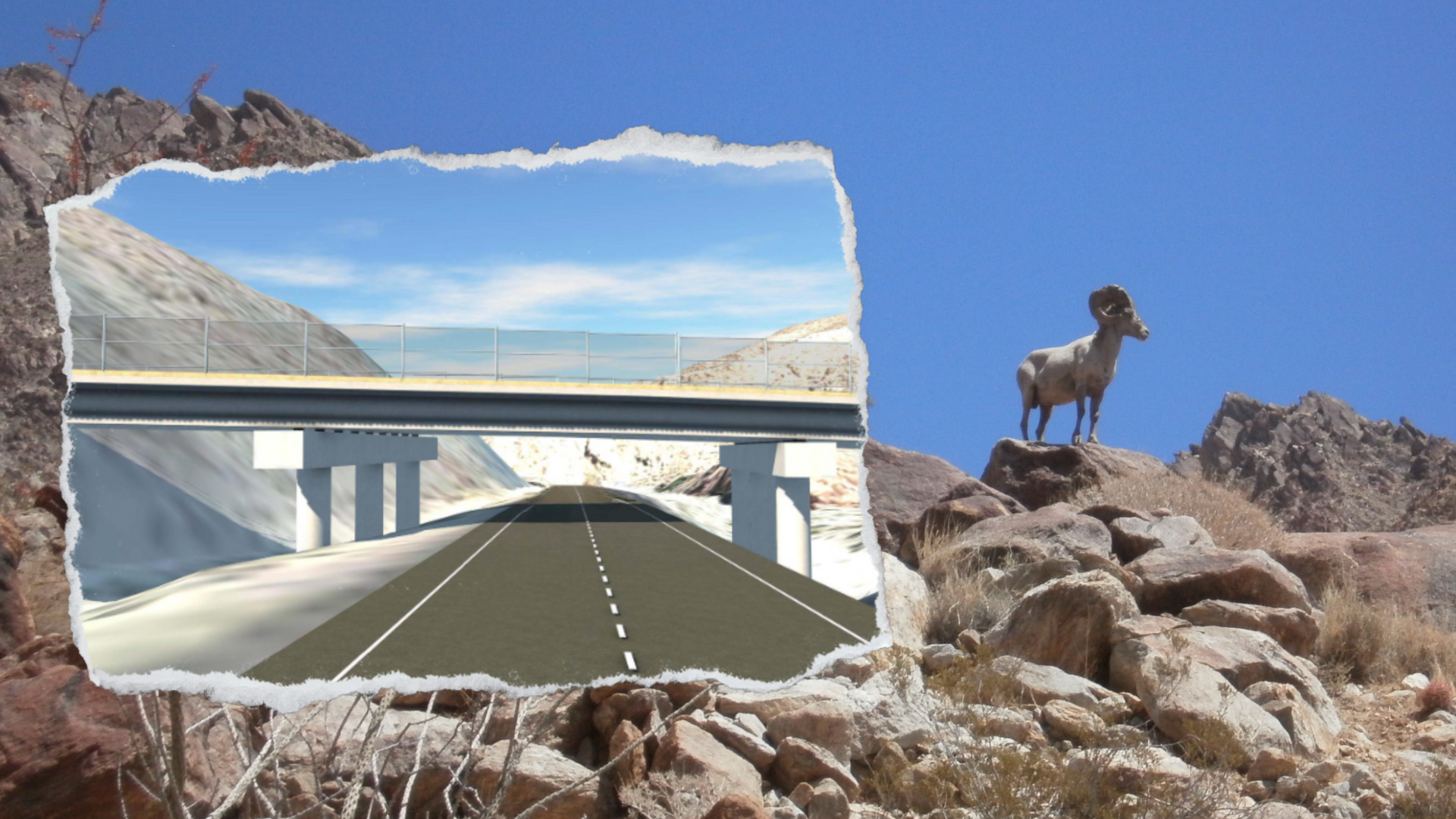
October 4, 2023
An Integral Step in Protecting California's Wildlife Situated in the rugged terrain of Southern California, the I-8 Peninsular Bighorn Sheep Crossing Project addresses a critical issue where Interstate 8 bisects the Peninsular Mountain range. This area, vital for the movement of the Federally Endangered Peninsular bighorn sheep, has become increasingly fragmented due to heavy traffic on the interstate. The project, spanning a crucial 5-mile stretch of habitat between the East and Westbound lanes of I-8, aims to reconnect these fragmented landscapes, providing safe crossing points for wildlife. Anza-Borrego State Park's Role in Conservation Adjacent to this critical project lies the expansive Anza-Borrego State Park, a vital sanctuary for the Peninsular bighorn sheep. The park plays a crucial role in the conservation of these magnificent creatures, providing a large, protected area where they can roam, feed, and breed without the immediate threats posed by urban development and busy roadways. Anza-Borrego's diverse habitats, ranging from desert lowlands to mountainous regions, offer an ideal environment for the bighorn sheep to thrive. The park's efforts in habitat preservation, research, and public education are integral to the survival and recovery of this endangered species. A Call to Action for Conservation Awareness For those interested in learning more about the I-8 Peninsular Bighorn Sheep Crossing Project and how it complements the conservation efforts of Anza-Borrego State Park, visiting i8wildlifecrossing.org is highly recommended. This website offers in-depth information about the project, its significance, and how it aims to create a safer, more connected ecosystem for wildlife in Southern California. The project not only serves as a vital step in wildlife preservation but also highlights the importance of collaborative efforts in conservation. It reminds us of the delicate balance between human development and the natural world, underscoring the need for innovative solutions to protect our planet's biodiversity.
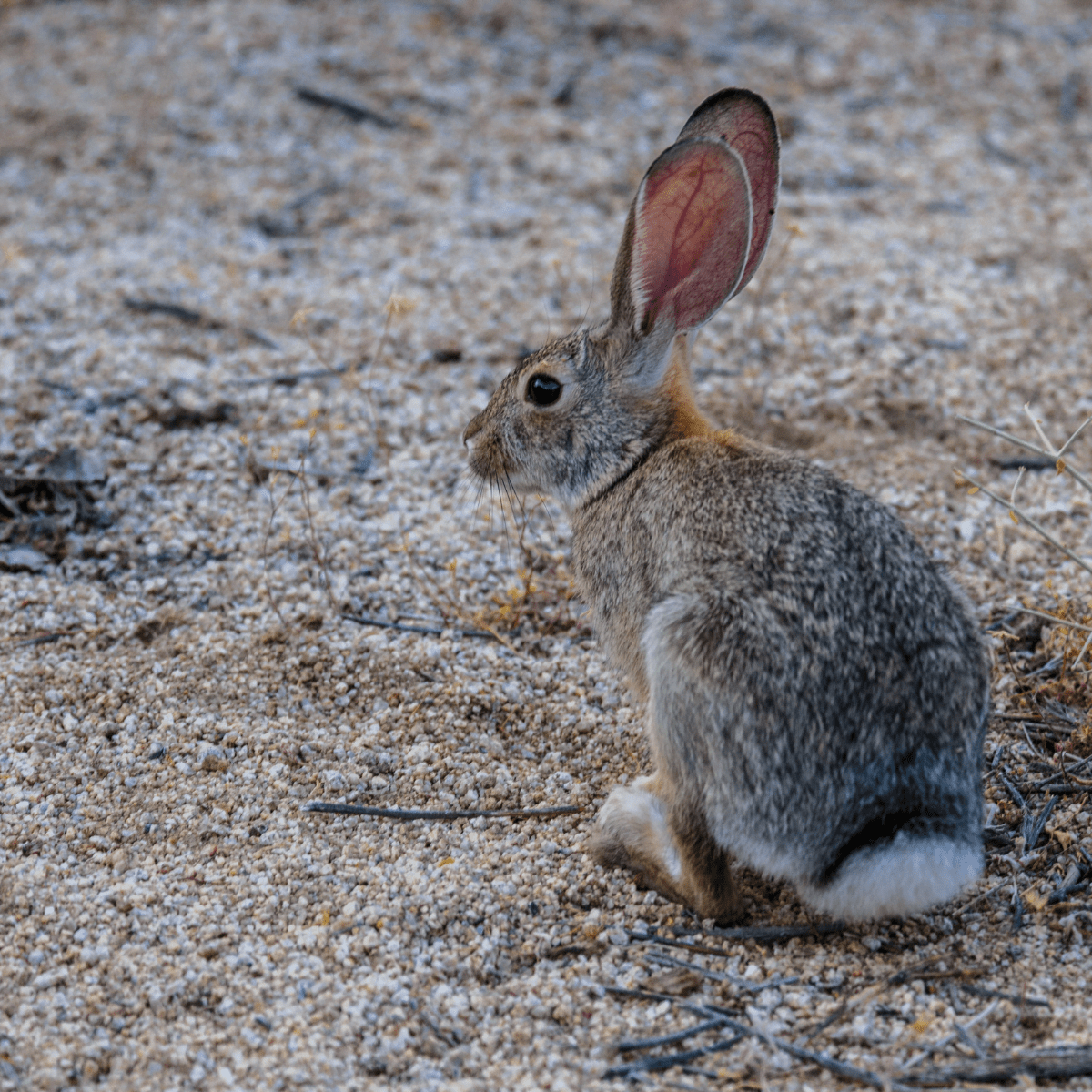
By Borrego Springs Local
•
January 20, 2023
Rabbit Haemorrhagic Disease (RHD) and Coyotes in Borrego Springs Rabbit Haemorrhagic Disease (RHD) is a serious and contagious illness that affects adult wild and pet rabbits of the Oryctolagus cuniculus species. When RHD enters a new area, it can cause large drops in rabbit populations. A common concern is whether this disease can spread to other animals, like coyotes, that might eat infected rabbits. Can Coyotes Get RHD? Studies show that RHDV, the virus that causes Rabbit Haemorrhagic Disease, does not affect other mammals, including coyotes. Even when scientists introduced the virus to 28 different animals, none got sick, and the virus didn’t multiply in their bodies. Specifically, research has shown that RHDV and its variants do not replicate in coyotes. Source: “Rabbit haemorrhagic disease virus: A review,” Journal of Comparative Pathology, Volume 153, Issue 3, September 2015, Pages 131-139. What Happens if Coyotes Eat Infected Rabbits? While coyotes that eat infected rabbits can develop antibodies, which is called seroconversion, they do not get sick from the virus or spread it to others. This means they’ve been exposed to the virus but can’t pass it on. Source: “Rabbit haemorrhagic disease in European rabbits and its potential impact on wild lagomorphs and their predators,” Biological Conservation, Volume 143, Issue 7, July 2010, Pages 1715-1724. Conclusion To sum up, while coyotes may develop antibodies after eating rabbits with RHD, they don’t get infected or spread the disease. However, it’s still important to be careful when handling wild rabbits in Borrego Springs and Anza-Borrego State Park to prevent the spread of RHD to other rabbit populations. Taking these precautions helps protect the local wildlife and keep rabbit communities healthy. Learn More About Borrego Springs
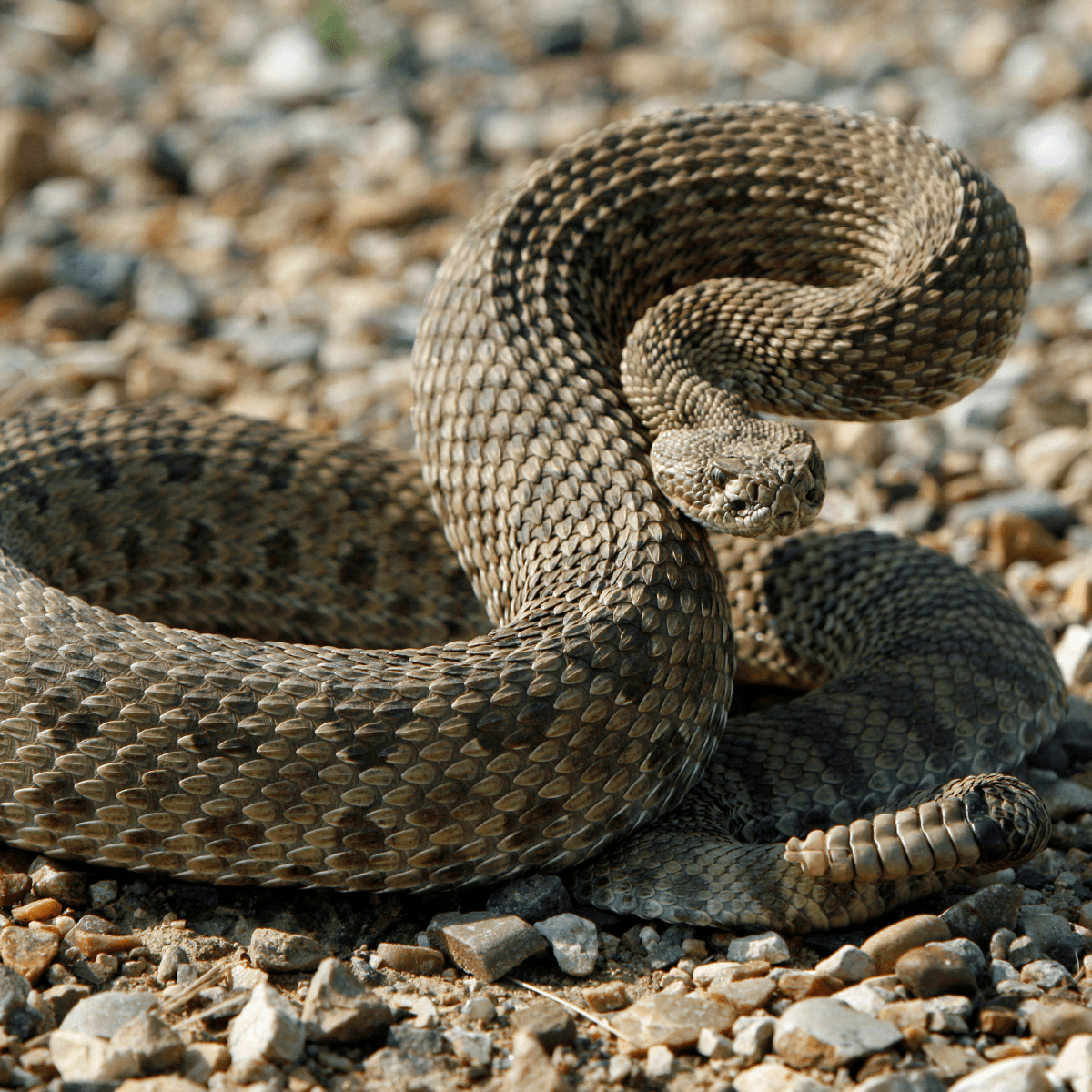
January 19, 2023
Anza Borrego State Park, located in Southern California, is home to a wide variety of wildlife, including rattlesnakes. While rattlesnake bites are rare, it’s important to know what to do if you are bitten while visiting the park.
First and foremost, it’s important to stay calm and not panic. Quickly move away from the snake to a safe distance and call for emergency medical services immediately. The emergency number for Borrego Springs is 911.
While waiting for emergency medical services to arrive, try to remember the color and shape of the snake. This information can be helpful to medical professionals in determining the appropriate treatment.
Remove any tight clothing or jewelry near the bite site, as they can constrict blood flow. Keep the affected limb immobilized and at or below the level of the heart to slow the spread of venom.
It is important to note that the use of a tourniquet, ice, or cutting the bite area is not recommended. These methods are not effective and can cause more harm.
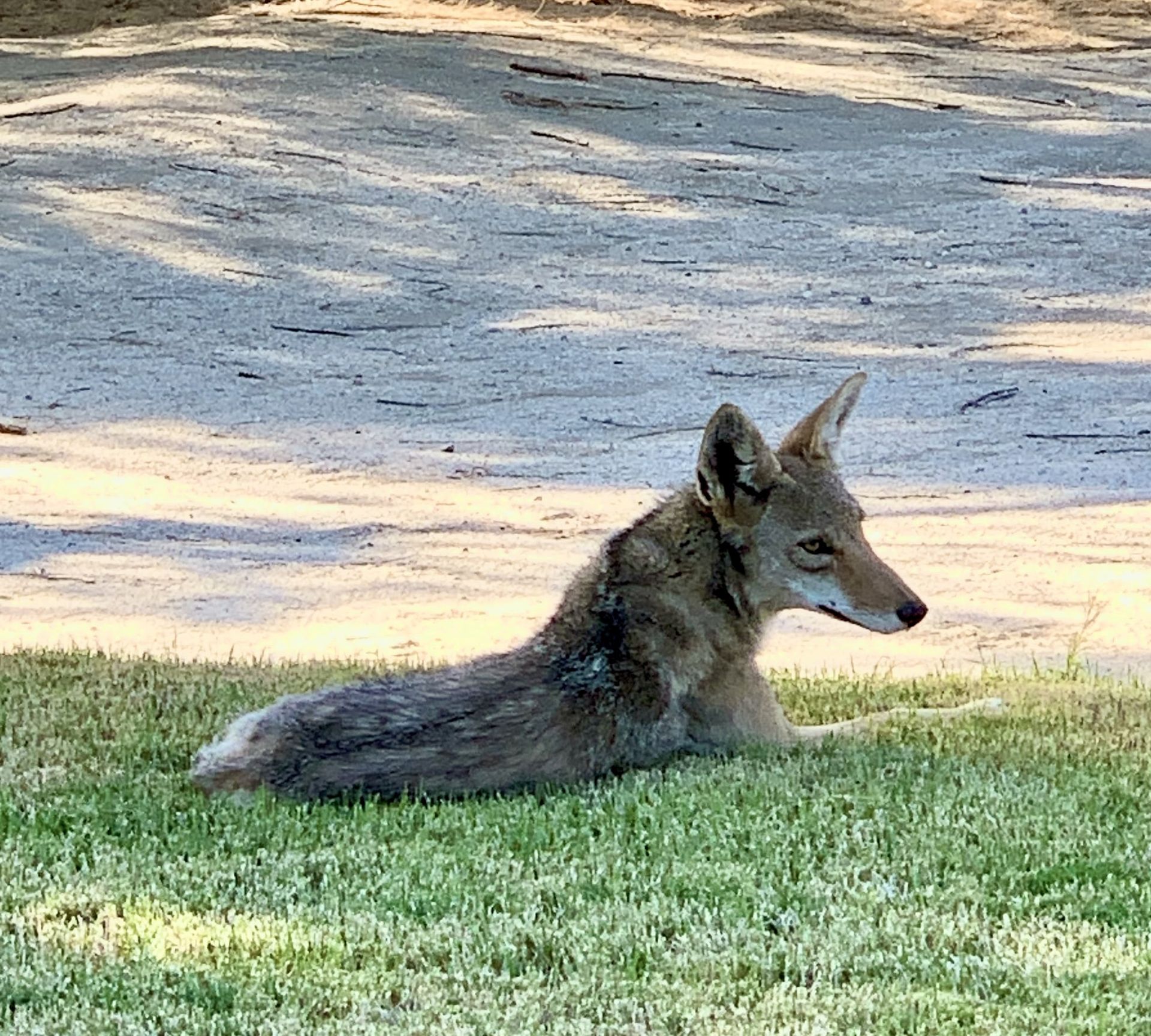
By Borrego Springs Local
•
December 31, 2022
If you live in or visit Borrego Springs, California, you may be familiar with the coyotes that are native to the area. These small, intelligent animals are an important part of the local ecosystem, and they can be fascinating to watch from a distance. However, it’s important to remember that coyotes are wild animals and should be treated with respect and caution.
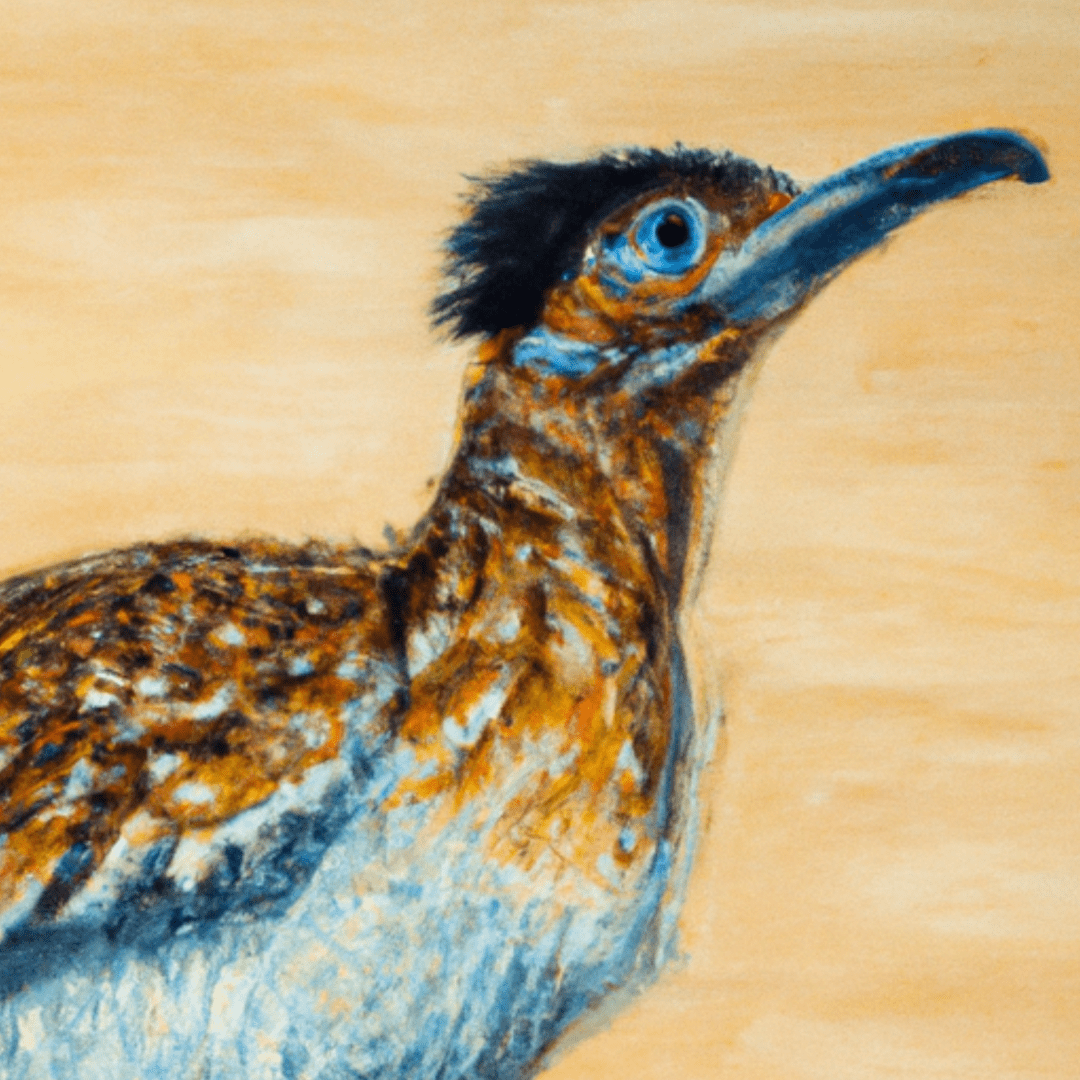
By Borrego Springs Local
•
December 26, 2022
Roadrunners are a common sight in Borrego Springs, California, and are known for their distinctive appearance and behavior. These fast and agile birds are native to the desert Southwest and are well-adapted to the hot and arid conditions of the region.
Roadrunners have long legs and a streamlined body, which helps them move quickly through the desert landscape. They are also able to fly, although they typically prefer to run or hop from place to place. Their diet consists mainly of insects, lizards, and small rodents, which they hunt using their sharp beak and talons.
One of the most distinctive features of roadrunners is their long tail, which they use for balance and stability as they run. They also have a distinctive crest on their head, which they raise when they are feeling threatened or excited.
If you’re visiting Borrego Springs, you’ll have a good chance of spotting a roadrunner during your trip. These birds are often seen darting through the desert landscape and can be found near any open areas where they can find food. They are most active during the day, so it’s best to look for them in the morning or afternoon.
Roadrunner Tracks
To increase your chances of seeing a roadrunner, try visiting the Anza-Borrego Desert State Park, which is home to a large population of these birds. You can also keep an eye out for their distinctive tracks, which are easy to spot in the sandy soil of the desert.
Whether you’re a birdwatcher or just curious about these fascinating creatures, the roadrunners of Borrego Springs are a must-see attraction on any visit to the area.
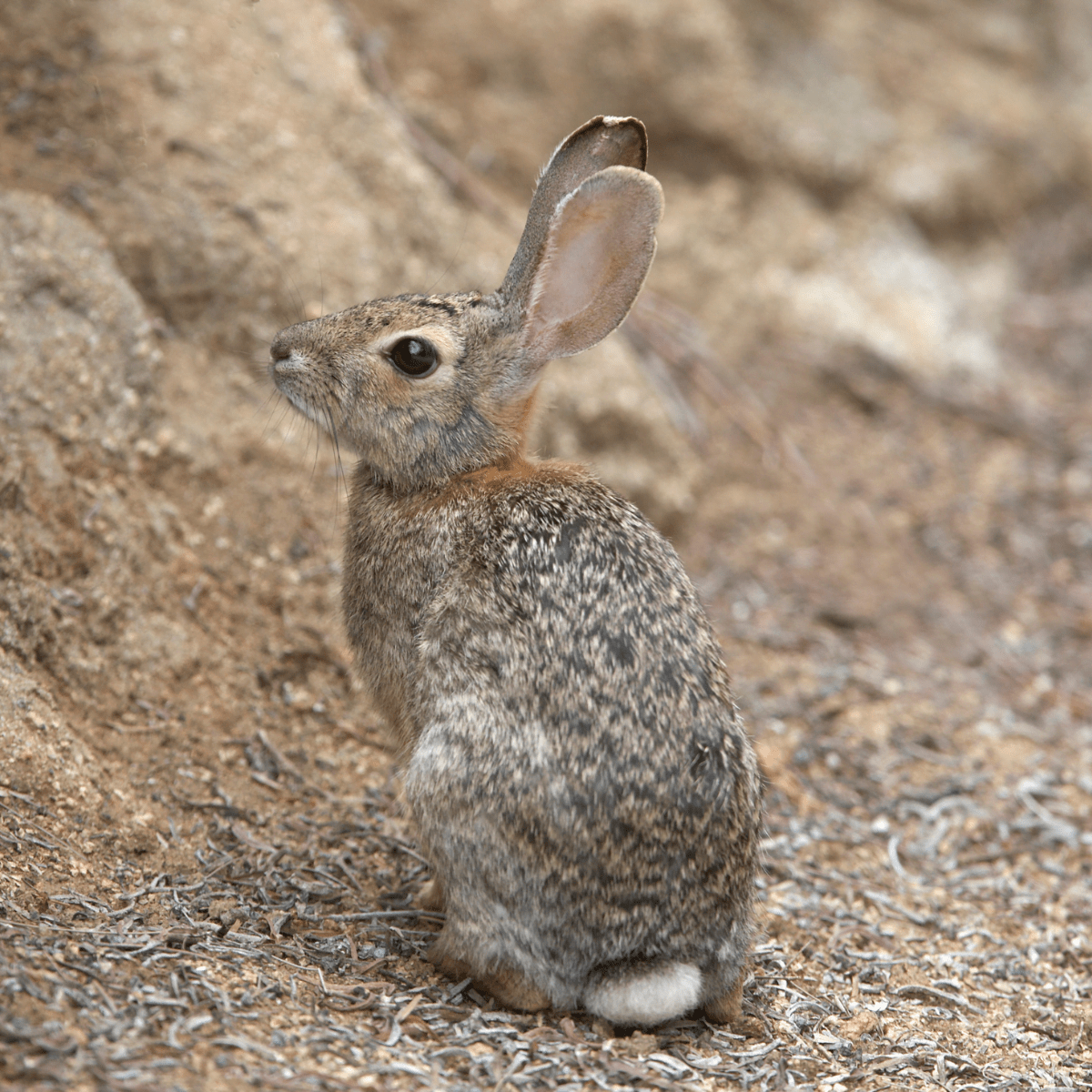
By Borrego Springs Local
•
August 16, 2022
Rabbit haemorrhagic disease (RHD) is a serious and often fatal illness that affects wild rabbits in many parts of the State of California and possibly in Borrego Springs based on the rapidly declining rabbit population seen by locals. The virus responsible for RHD is called Rabbit haemorrhagic disease virus (RHDV) and it was first identified in 1984. RHDV is part of a larger group of viruses called rabbit lagoviruses, which also includes non-pathogenic viruses known as RCVs.
Want to read something else about Borrego Springs? Give us some Ideas!
We're always on the lookout for fresh perspectives and hidden gems in Borrego Springs! Share your ideas and suggestions with us! or even submit your own article!
Contact Us
Thank you for contacting us.
We will get back to you as soon as possible.
We will get back to you as soon as possible.
Oops, there was an error sending your message.
Please try again later.
Please try again later.
Explore Borrego Springs, the gateway to Anza-Borrego Desert State Park. Discover its stunning landscapes, vibrant community, and sustainability-focused growth.
Sign up for our newsletter!
Sign up for our newsletter!
Sign up for our newsletter!
You're All Signed Up!
Oops, there was an error sending your message.
Please try again later.
Please try again later.

